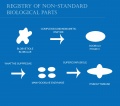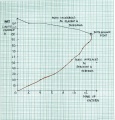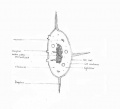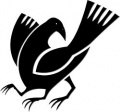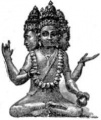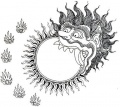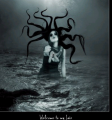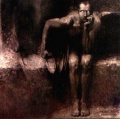Difference between revisions of "ArtScience IGEM team"
(→Workshop) |
(→May 17th) |
||
| Line 156: | Line 156: | ||
[[The May 17th Notebook]] | [[The May 17th Notebook]] | ||
| − | |||
| − | |||
| − | |||
| − | |||
| − | |||
| − | |||
| − | |||
| − | |||
| − | |||
| − | |||
| − | |||
| − | |||
| − | |||
| − | |||
| − | |||
| − | |||
| − | |||
| − | |||
| − | |||
| − | |||
| − | |||
| − | |||
| − | |||
| − | |||
| − | |||
| − | |||
| − | |||
| − | |||
| − | |||
| − | |||
| − | |||
| − | |||
| − | |||
| − | |||
| − | |||
| − | |||
| − | |||
| − | |||
| − | |||
| − | |||
| − | |||
| − | |||
| − | |||
| − | |||
| − | |||
| − | |||
| − | |||
| − | |||
| − | |||
| − | |||
| − | |||
| − | |||
| − | |||
| − | |||
| − | |||
| − | |||
| − | |||
| − | |||
| − | |||
| − | |||
| − | |||
| − | |||
| − | |||
| − | |||
| − | |||
| − | |||
| − | |||
| − | |||
| − | |||
| − | |||
| − | |||
| − | |||
| − | |||
| − | |||
| − | |||
| − | |||
| − | |||
| − | |||
| − | |||
| − | |||
| − | |||
| − | |||
| − | |||
| − | |||
| − | |||
| − | |||
| − | |||
| − | |||
| − | |||
| − | |||
| − | |||
| − | |||
| − | |||
| − | |||
| − | |||
| − | |||
| − | |||
| − | |||
| − | |||
| − | |||
| − | |||
| − | |||
| − | |||
| − | |||
| − | |||
| − | |||
| − | |||
| − | |||
| − | |||
| − | |||
| − | |||
| − | |||
| − | |||
| − | |||
| − | |||
| − | |||
| − | |||
| − | |||
| − | |||
| − | |||
| − | |||
| − | |||
=== '''May 19th''' === | === '''May 19th''' === | ||
Revision as of 08:11, 22 May 2009
Contents
People
Ideas
-bacteria that prevents corrosion
-Time keeper or clock
-Combustible bacteria
-Related to weather - smell of rain
-Bacteria that is resistant to Scientific Probing/Instruments
-Mirror of bacteria
-Buoyant bacteria
-Interactive bacteria(painting)
-Another creature made from bacteria
-Bacteria and sound
- Bacteria visualizations. (Both colour changes and 'choreographed' movement)
-Neuro transmitters- bacteria as sensors for emotions
-Glue
-Bacteria that detects cravings
-Magnetic bacteria
-Self mutating Bacteria
-Lie detector
-Bacteria creates an identity
-Bacteria becoming material on death
-Constructing a 'Bacterial Ecology'
-Bacteria that acts like oil
- A lubricant - A liquid that can withstand high temperatures
- Facilitate a group of children to design their 'perfect creature' through visual/tactile media and then draw from these experiences and ideas to build another structure.
- Basic information on micro biology-synthetic biology becomes accessible in the forms of brochures/charts/posters in the team's work space.
Workshop
May 15th
-We discussed two Claire Pentacost Readings-Beyond Face and Critical Inventory of BioArt .
-The gist of the Pentacost readings were that artists work with the symbolic and that the Artist's consent to work and learn in public is important. -We also discussed the political and cultural implications of Scientific Authority. -We also looked at Tuur Van Balen's Urban Geography project -Most of the Ideas[see above] today, dealt with the use of bacteria as -a) A sensor or Reactor - (to Inputs,emotions,light..etc) -b) A Producer (of energy, proteins..etc) -c) A Material
-Is there Any way in which we can look at Bacteria from a purely non-symbiotic / non-anthropomorphic viewpoint? -Can we use our technological "progress" to give a non-selfish gift back to our ecological siblings?
-Replace financial transactions with Bacteria
May 16th
Here's some creatures we created using techno-scientific jargon and aesthetics:
- Error creating thumbnail: File with dimensions greater than 12.5 MP
Id bacteria-Akash
Today's reading was called Speculative Fabulations for Technoculture's Generation by Donna Haraway.
-The article is primarily a review of the Australian artist Patricia Piccinini's work and a recapitulation of Haraway's philosophies .
-One of the things enduring about the reading was her appeal to "love" our creations, not in a tech.no- phillic sense but in a more nurturing and caring way.
May 17th
Hybrid creatures from mythology:
May 19th
We spent the day in NCBS picking up some standard biological techniques-Gel electrophoresis And looking at some of the microscopy equipment at NCBS.
- Error creating thumbnail: File missing
May 21th
We put down all the information that we had about learnt about geosmin. We then put down the various paths we could take in order to produce the results we wanted. This exercise cleared certain doubts we had, but also raised a lot of questions.
First Prototype of the Bacteria
Readings
Art and Politics
Claire Pentecost::Beyond Face[1]
Claire Pentecost::Outfitting the Laboratory of the Symbolic: Towards a Critical Inventory of BioArt[2]
Donna Haraway::Speculative Fabulations for Technoculture's Generations[3]
Oron Catts, Ionat Zurr::The ethics of experiential engagement with the manipulation of life
Art
GeneAeshetics, The Art of Joe Davis[4]
Adam Zaretsky[5]
Patricia Piccinini[6]
Designer Bodies: Towards a Posthuman Condition[7]
Science
What are bacteria?[8]
Planet of the Bacteria[9]
Introductory Video Lectures in Biology[10]
Design & Technology
Urban BioGeography[11]
Designer Bacteria may have a future in Fashion[12]
Sunlight to Oil via Designer Bacteria[13]
Loop.ph-Design Research Studio[14]
Laughing in a sine curve- Abhishek Hazra[[15]
Some interesting bio-design stuff by Brandon Ballangee and the likes. [[16]]
Synthetic Biology:
Gel Electrophoresis [17]
Extracting DNA at home [18]
Harvard 2006: Explaining their process[[19]]
The Synthetic Biology Comic[[20]] The .pdf version is here:[21]
Introduction to Biological Engineering Design [22]
Introduction to Synthetic Biology[23]
Ibio Seminars [24]
General Design Links
http://psd.tutsplus.com/drawing/the-role-of-sketching-in-the-design-process/

